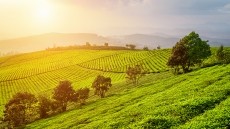Novel ingredient approval sought for baobab extract
application to use baobab fruit pulp as an ingredient in smoothies
and cereal bars.
PhytoTrade Africa, the southern Africa natural products trade association, said that it intends to use the pulp as a food ingredient in a range of food products, and that the level of fruit pulp in each product would be between 5 and 15 per cent.
It also intends to market a baobab fruit pulp with the pectin removed as an ingredient for use in other products such as biscuits, confectionery, and related products.
Pectin can thicken or cloud a product, which can limit the ways in which it is used.
The fruit pulp of the baobab is said to have an antioxidant activity about four times that of kiwi or apple pulp. The main nutrients include vitamin C, riboflavin, niacin, pectin and citric, malic and succinic acids, while the oil also contains the vitamins A, D and E.
The pulp is also reported to be prebiotic and stimulate the intestinal microflora.
The issue however is that baobab fruit pulp is a novel food. A novel food is a food or food ingredient that does not have a significant history of consumption within the European Union before 15 May 1997.
Before any food product can be introduced on the European market, it must be rigorously assessed for safety. In the UK, the assessment of novel foods is carried out by an independent committee of scientists appointed by the Food Standards Agency (FSA), the Advisory Committee on Novel Foods and Processes (ACNFP).
If successful, the application will further underline the growing popularity of exotic ingredients derived from Africa. While some extracts, like Devils claw, honeybush, and rooibus extracts are currently available in Europe and elsewhere, novel products such as baobab tree extracts, have yet to gain approval.
However, PhytoTrade Africa, in collaboration with South African company Afriplex, has been working to ensure the ingredient's acceptance within the European ingredients market.
"We've been working for some time with Afriplex on the baobab fruit," Cyril Lombard, market development manager for PhytoTrade Africa, recently told FoodNavigator.
"With its long history of safe and traditional use on the continent, this is one of Africa's most exciting species. Its nutritional profile and properties, as well as its inherent market appeal, make it an interesting novel ingredient for the food and beverage industry."
African baobab trees are found mainly in South Africa, Botswana, Namibia, Mozambique and Zimbabwe. Baobab dried fruit pulp is derived from the fruits of the tree (Adansonia digitata), which is also known as the 'upside down tree'.
On pollination by fruit bats, this tree produces large green or brownish fruits. Different parts of the fruit are a traditional food in these countries.
The ACNFP is a non-statutory body of scientific experts that advises the FSA on any matters relating to novel foods (including genetically modified foods) and novel processes (including food irradiation). The committee carries out safety assessments of any novel food or process submitted for approval under the EC novel food regulation.
As well as information on the nutritional content of the baobab fruit, the application also has details of the way the fruit and closely related species have been used in different countries, both as a general foodstuff and for particular ceremonial uses. It also discusses the environmental impact of harvesting the fruit.
Any comments on this application should be sent to the ACNFP Secretariat by 3 September 2006 and will be passed to the Committee before it finalises its opinion.


























